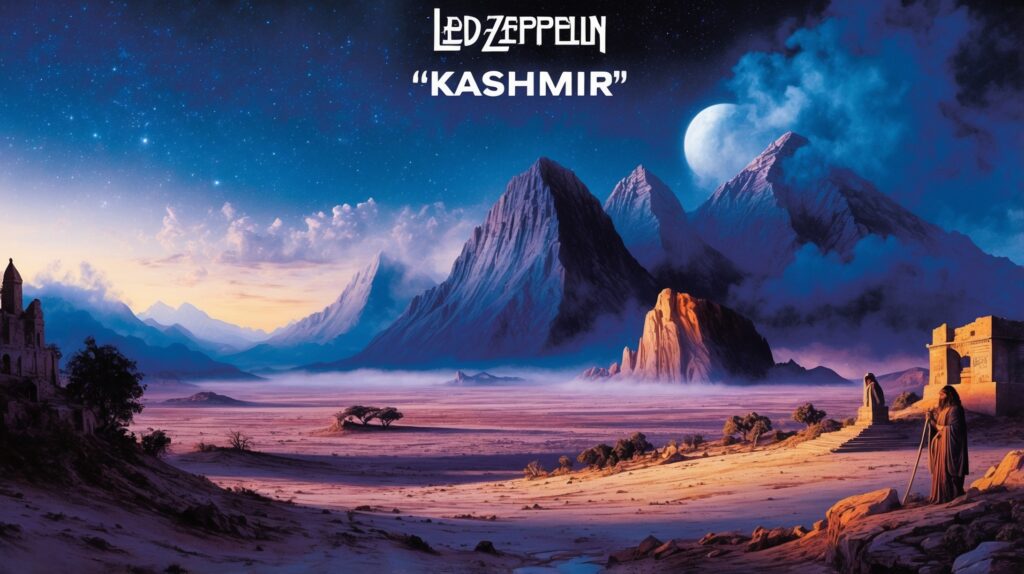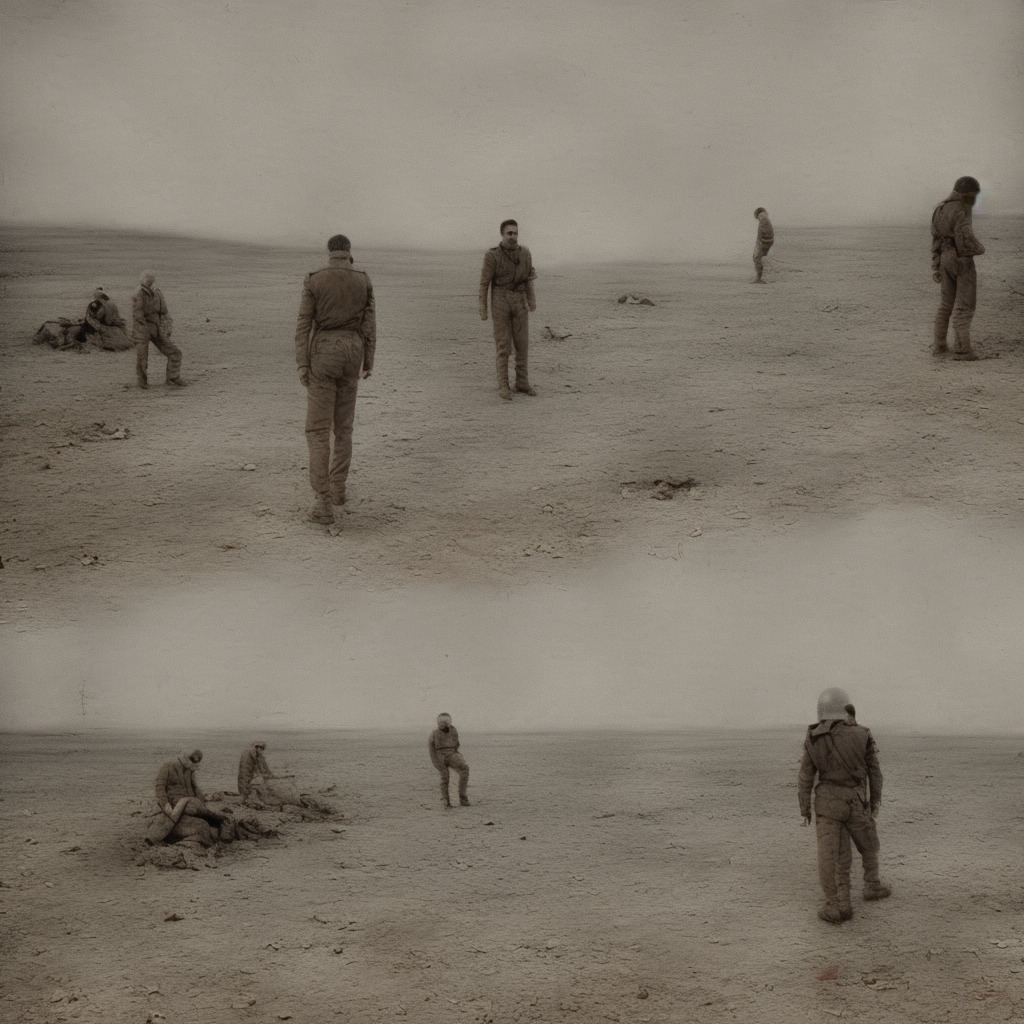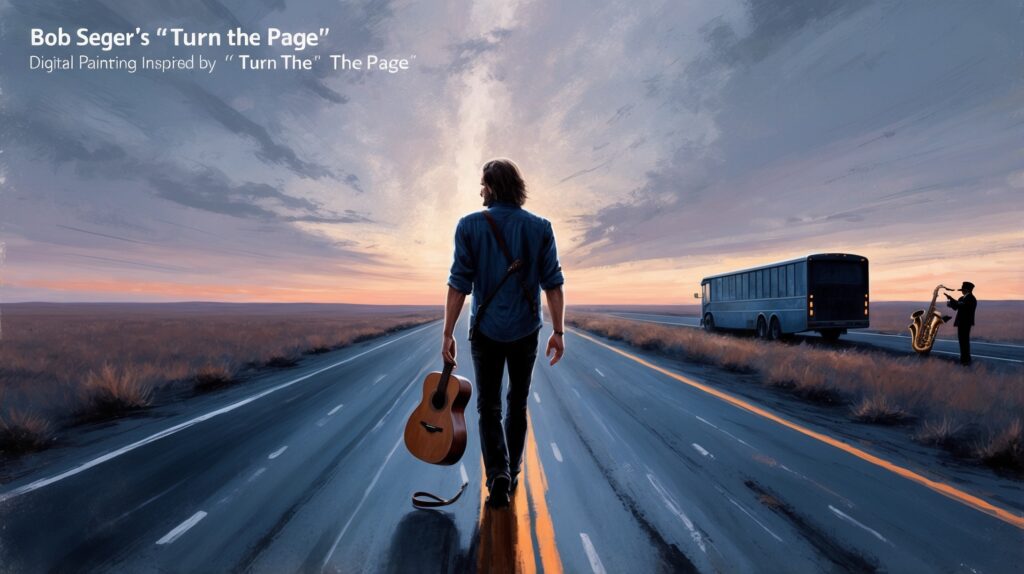Led Zeppelin: The Architects of Rock’s Majestic Tapestry
Led Zeppelin, an innovative rock band of the late ’60s and ’70s, revolutionized the music scene with their unique blend of blues, folk, and psychedelia. Their song “Kashmir” epitomizes their creative genius, particularly during a period of both success and challenges.
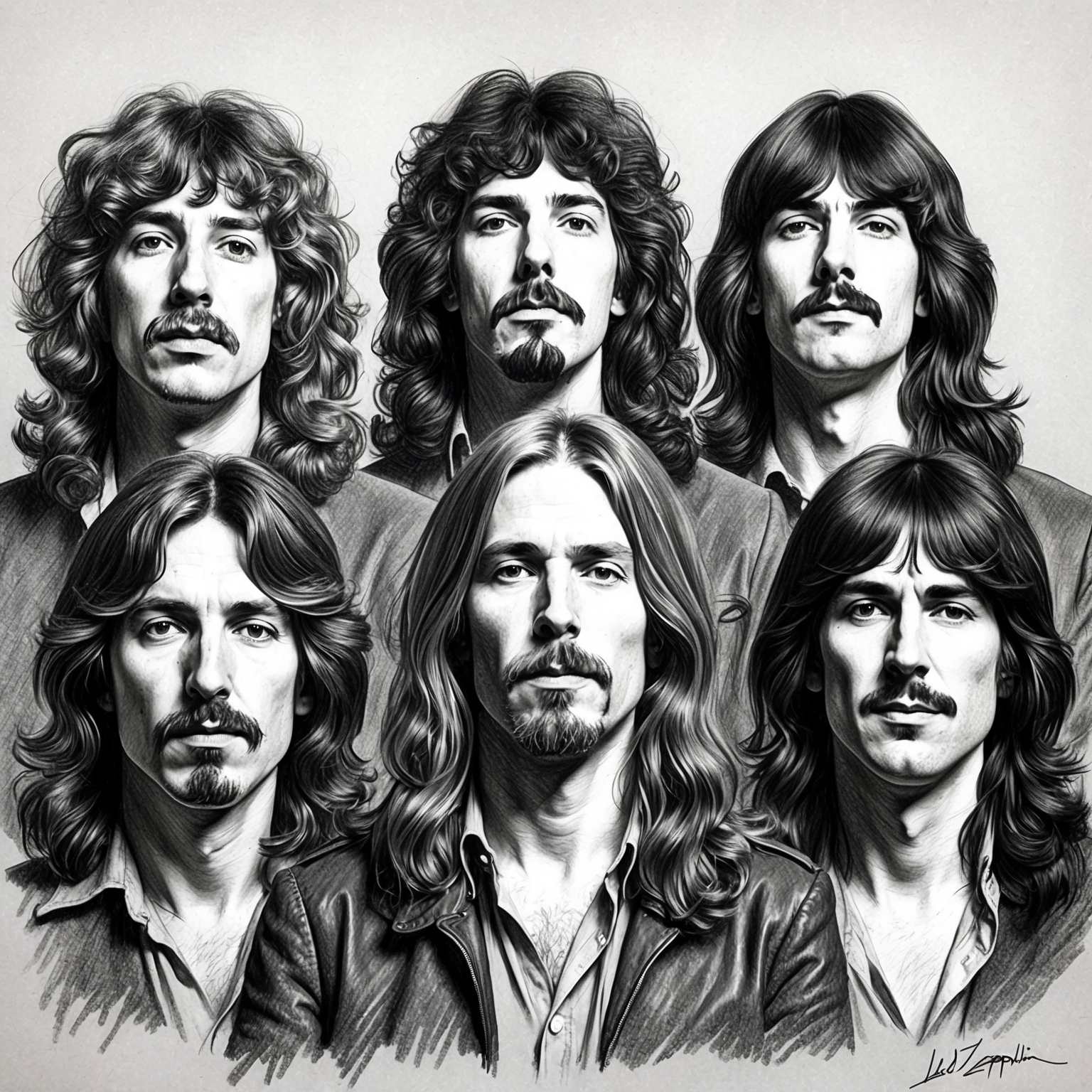
Led Zeppelin, one of the most iconic rock bands of the 20th century, crafted a legacy that is revered and relentless in its influence. Formed in 1968, the band’s original lineup consisted of Robert Plant, Jimmy Page, John Paul Jones, and John Bonham. Their innovative approach to rock music, blending blues, folk, and psychedelia, set them apart in the ever-evolving musical landscape of the late ’60s and ’70s. The song “Kashmir,” an epic masterpiece from their sixth studio album, Physical Graffiti, stands as a testament to their creative prowess, embodying what many consider to be the quintessential Zeppelin sound.
In their formative years, each member brought unique skills to the band. Jimmy Page, the virtuosic guitarist, had already made a name for himself as an accomplished session musician and a member of The Yardbirds. John Paul Jones, a classically trained multi-instrumentalist, contributed his deft skills on the bass and keyboards. The powerhouse rhythm section was anchored by drummer John Bonham, whose thunderous beats became a defining element of the band’s sound. Leading the charge was vocalist Robert Plant, with his electrifying voice that could sway from delicate whispers to piercing shouts. Together, they were a force of nature, blending their talents to create something wholly new and groundbreaking.
The period surrounding the release of “Kashmir” in 1975 was a time of both immense success and internal challenges for Led Zeppelin. The early ’70s saw them achieve phenomenal commercial success and cement their status as rock royalty, yet it was also a time of personal excess and fatigue. Despite these challenges, the band’s synergy and shared vision transcended the frictions, each member contributing to the complex tapestry that “Kashmir” would become. This song’s development involved collaborative brainstorming and refinement, with Page’s guitar riffs and Plant’s evocative lyrics evolving in an environment of mutual respect and creative exploration.
The Mastermind Behind ‘Kashmir’: Jimmy Page
Discover the creative genius of Jimmy Page, the mastermind behind Led Zeppelin’s ‘Kashmir’. Explore his unique musical style and the key role he played in bringing this iconic song to life.

Background and Career: Jimmy Page, a name synonymous with rock music, is the creative force behind ‘Kashmir’ and stands as one of rock’s most influential guitarists and composers. Born in Heston, England, in 1944, Page discovered music at an early age and began playing the guitar when he was just 12. Before forming Led Zeppelin, he made his mark as a sought-after session musician and as a member of The Yardbirds, where his innovative techniques began to take shape. His mastery over his instrument and his flair for creating rich, textured sounds laid the foundation for one of the most successful rock bands in history.
Musical Style and Influences: Page’s musical style is characterized by his blend of blues, rock, and folk elements, enriched with exotic scales and modal changes reflective of Middle-Eastern and Celtic music. ‘Kashmir’ is a testament to these influences, showcasing his ability to fuse these elements into a cohesive masterpiece. He drew inspiration from a diverse range of artists, including early blues legends and avant-garde composers, which contributed to the depth and authenticity of his sound.
Role in the Song’s Creation: As the principal composer for ‘Kashmir’, Jimmy Page played a pivotal role in crafting its epic structure and distinctive soundscape. His innovative guitar work intertwines seamlessly with orchestral arrangements, creating a mystical ambiance that envelops the listener. His use of an open Dsus4 tuning and the collaboration with John Bonham’s powerful drumming were crucial in building the song’s expansive, hypnotic groove that has captivated audiences for decades.
Noteworthy Covers and Prestigious Recognition
Explore how Led Zeppelin’s “Kashmir” transcended its album roots to become a rock staple. From earning its spot among the greatest rock tracks to inspiring covers by artists, the song’s influence spans media and generations.
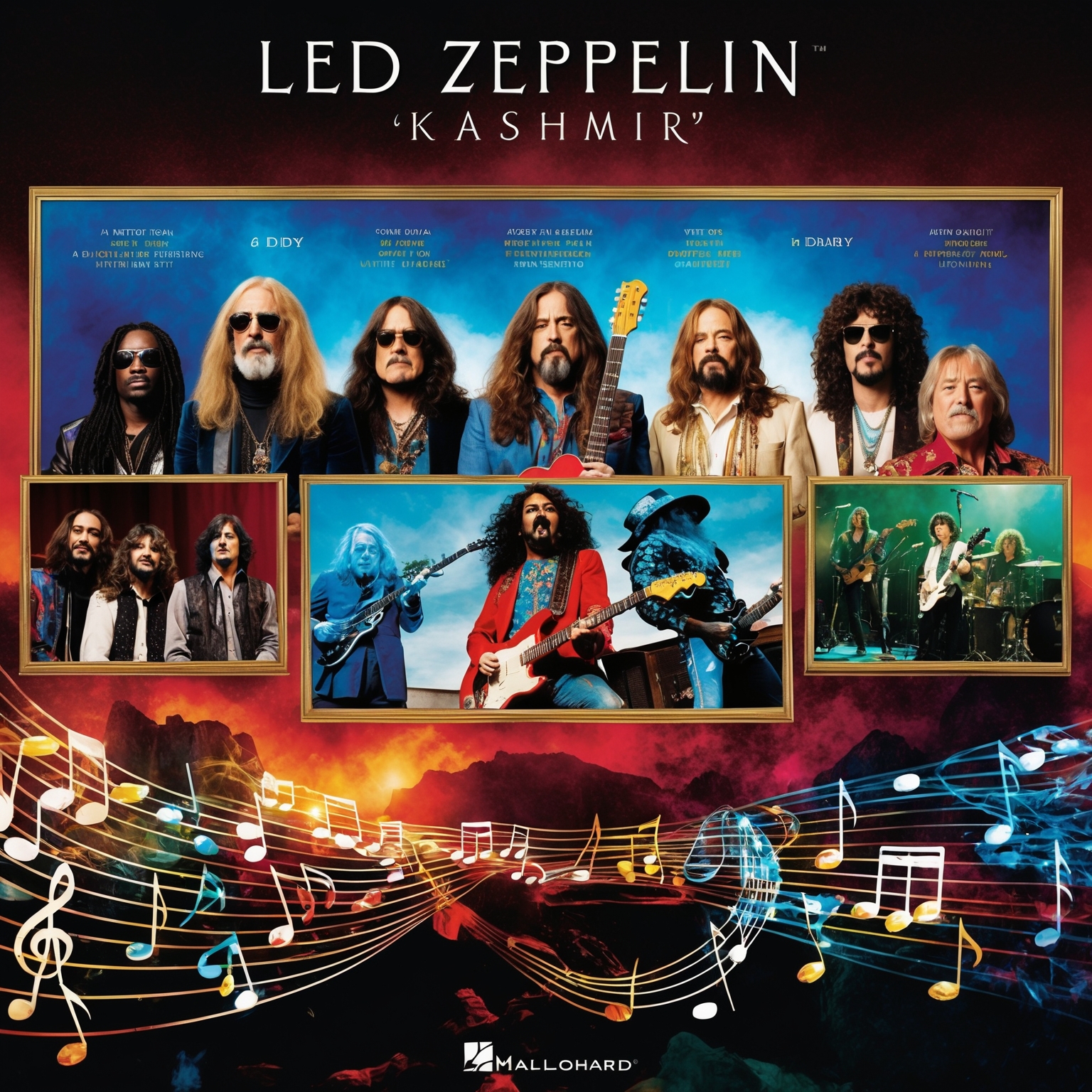
“Kashmir” by Led Zeppelin is often hailed as one of the band’s most ambitious and enduring tracks. Despite not being released as a single, the song has carved a legendary path in the annals of rock music. When discussing awards and accolades, “Kashmir” itself was not directly honored with trophies but has been consistently celebrated within the rock canon. It was prominently included in ‘Rolling Stone’ magazine’s list of “The 500 Greatest Songs of All Time,” further cementing its iconic status. Such acknowledgments keep the legacy alive and continually celebrate its contribution to rock music.
Numerous artists have paid homage to “Kashmir” through covers, each adding their distinct flavor. Notably, P. Diddy sampled the song in his 1998 hit “Come with Me,” which was part of the soundtrack for the film ‘Godzilla.’ Another prominent cover was delivered by Tool’s Maynard James Keenan and Alisan Porter on an episode of ‘The Voice,’ showcasing the song’s versatility and appeal across different genres and generations. These covers not only pay tribute to the original but also introduce “Kashmir” to new audiences, broadening its impact.
In terms of cultural presence, “Kashmir” has made its way into multiple media and entertainment forms. The track has been featured in several movies, television shows, and even video games. Most notably, it was a part of the ‘Fast Times at Ridgemont High’ soundtrack, further embedding Zeppelin’s presence in pop culture. Additionally, its inclusion in music video games like ‘Guitar Hero World Tour’ and ‘Rock Band’ has allowed players to engage interactively with the music, experiencing the intricate musicianship that characterizes the track. These appearances emphasize the song’s timeless relevance and enduring influence.
The Chart Journey of ‘Kashmir’: A Timeless Odyssey
Without traditional chart success upon release, ‘Kashmir’ by Led Zeppelin achieved legendary status over time. Integral to the album ‘Physical Graffiti,’ it boosts its legacy through innovative style and enduring appeal.

When Led Zeppelin released ‘Kashmir’ in 1975 as part of their iconic album ‘Physical Graffiti,’ it was not initially released as a single. Hence, it did not chart on mainstream singles lists like the Billboard Hot 100 at the time of its release. However, its impact was deeply felt, both in the context of Led Zeppelin’s discography and the rock music landscape of the era. Although ‘Kashmir’ never soared to the top of the charts in the traditional sense, its powerful riff and mystic allure have granted it a legendary status that surpasses mere numbers. In subsequent years, ‘Kashmir’ has been included in various compilations and received considerable playtime on classic rock stations, continually affirming its enduring popularity.
Led Zeppelin was already on a roll of monumental success when ‘Kashmir’ was introduced to fans. The song’s inclusion in live performances always stirred immense excitement, and it became a staple at the band’s concerts. As part of the ‘Physical Graffiti’ album, ‘Kashmir’ contributed to the album’s remarkable triumph, helping it reach number one on the Billboard 200 and maintaining its place there for six consecutive weeks. The album itself received commercial accolades, eventually being certified 16x platinum by the RIAA, highlighting its financial triumph and the role ‘Kashmir’ played in this success.
The promotional strategy for ‘Physical Graffiti’ centered around its artistic grandeur and the mystique of Led Zeppelin. The band refrained from the typical promotional campaigns through TV appearances but maintained a strong presence with electrifying performances. ‘Kashmir’ wasn’t just a song; it was an experience that resonated deeply with audiences worldwide, bolstered by rave reviews from critics and beloved by fans for its complex structure and rich, hypnotic sound. Although it wasn’t a chart-topping single, the song has had a lasting cultural impact, inspiring countless artists and continuing to captivate new generations of listeners.
Exploring the Visual Legacy of ‘Kashmir’
Although ‘Kashmir’ lacks an official music video, its legendary status is maintained through fan videos and stunning live performances, enriching its iconic appeal.
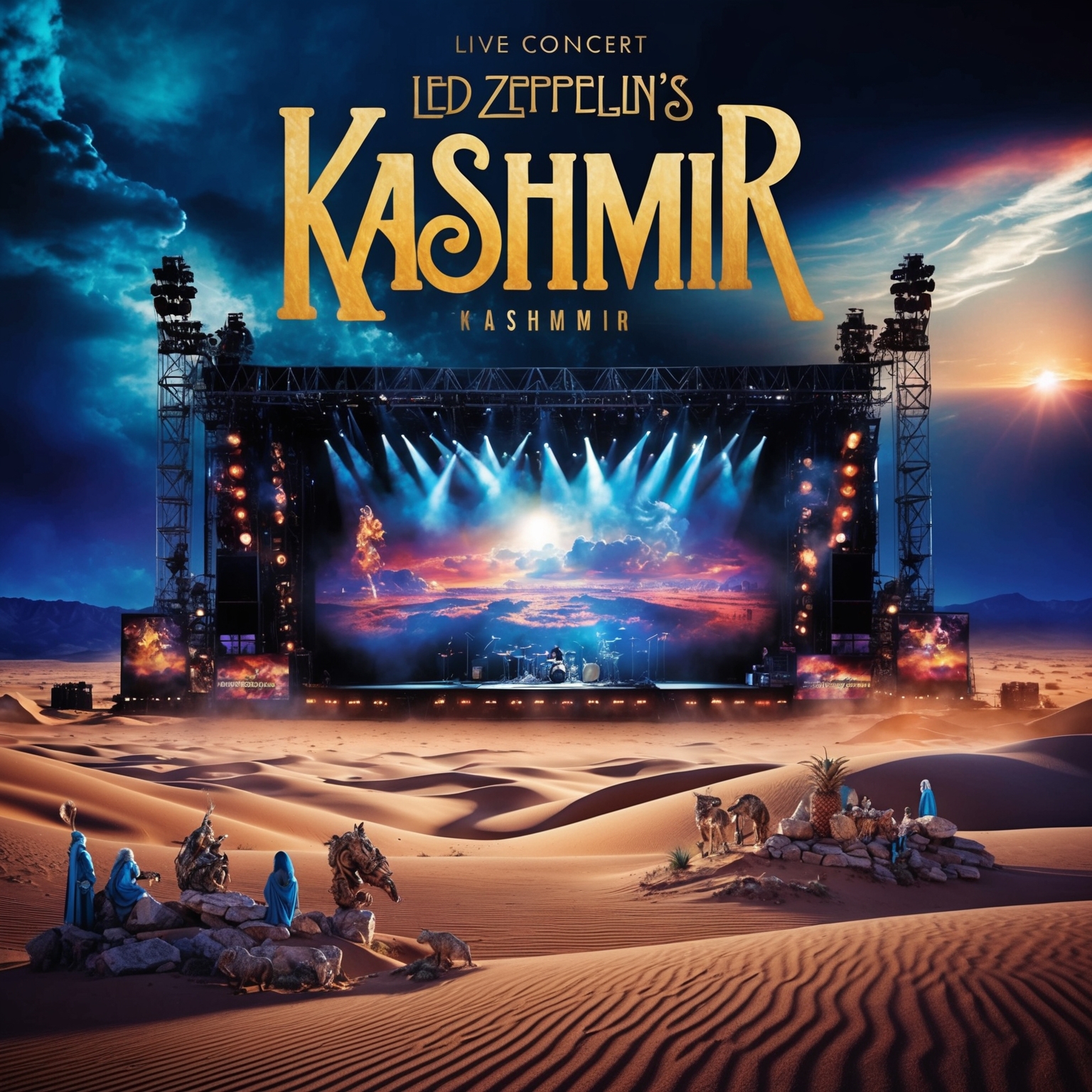
While Led Zeppelin’s ‘Kashmir’ never received an official music video, its influence can be seen across a range of fan-made videos and notable live performances that capture the song’s mystical and expansive aura. These interpretations, though unofficial, offer unique visual experiences that pay homage to the band’s groundbreaking work. The fan videos often lean heavily on psychedelic themes or desert landscapes, mirroring the epic and hypnotic feel of the song. **These visual creations**, though varied in style and execution, share a common goal: to encapsulate the grandeur and timelessness of ‘Kashmir’ through visuals that echo its musical journey.
Led Zeppelin’s live performances of ‘Kashmir’ also serve as a visual feast for audiences. One of the most famous renditions is from their **1979 Knebworth Festival** performance, where the interplay of lights and the band’s charismatic stage presence elevated the song to an exhilarating experience. Robert Plant’s powerful delivery and Jimmy Page’s masterful guitar work provided a visual and musical spectacle, immortalizing the song in rock history.
The enduring popularity of ‘Kashmir’ has spurred numerous artistic interpretations, inspiring countless artists and filmmakers to visualize the song in creative ways. The reception of these various adaptations has been overwhelmingly positive, with critics praising how these visuals complement the song’s otherworldly atmosphere. The people involved in creating these fan videos often include dedicated Zeppelin fans, filmmakers, and animators who share a common passion for the band’s music. Their dedication speaks volumes about the song’s impact and its place in rock music’s visual culture.
Exploring the Complex Composition of ‘Kashmir’
Uncover the intricate musical structure of ‘Kashmir’ by Led Zeppelin, exploring its key, complex melody, unique instrumentation, and where it fits in the band’s artistic evolution.

Delving into the musical structure of Led Zeppelin’s ‘Kashmir’ reveals a fascinating blend of complexity and innovation. The song is primarily composed in the key of D major and is structured around a distinctive riff created by guitarist Jimmy Page, employing alternative chord progressions that contribute to its unique sound. The time signature is an unconventional 4/4 with a driving, hypnotic quality that stems from its rhythmic consistency and powerful percussion by drummer John Bonham.
The melody of ‘Kashmir’ is particularly noteworthy for its modal approach, utilizing a Western interpretation of exotic scales which helps evoke the mystical atmosphere of the song that complements its lyrical themes. Robert Plant’s vocals soar over the intricate instrumentation, adding layers of harmonic depth. The tempo is moderate, allowing the band to explore grand musical landscapes, characterized by a bold blend of rock and orchestral elements through the use of strings and brass.
Instrumentally, ‘Kashmir’ is defined by its rich sonic tapestry. The orchestration includes not only traditional rock instruments like electric guitar and bass but also augmented by mellotron strings to create a symphonic quality. John Paul Jones’s keyboard work is instrumental in building the song’s atmospheric backdrop, offering a textural layer that bridges the rock and orchestral elements. The track presents a notable evolution in Led Zeppelin’s sound, embodying both the culmination of their earlier blues-rock experiments and a shift towards grander, more epic compositions showcased later in ‘Physical Graffiti’. Anecdotes from the recording sessions describe the song as a labor of love, recorded across several locations including Headley Grange and studios in London, capturing the band at a creative peak.
Decoding the Mystical Journey in ‘Kashmir’
The lyrics of Led Zeppelin’s ‘Kashmir’ take listeners on a mystical journey rich with themes of exploration, spirituality, and timeless wisdom. Through vivid storytelling and poetic imagery, the lyrics transcend ordinary narratives, offering a deep and resonant experience.
I am a traveler of both time and space to be where I have been.
To sit with elders of a gentle race this world has seldom seen.
Who talk of days for which they sit and wait
When all will be revealed.
Talk and song from tongues of lilting grace
Sounds caress my ear.
Though not a word I heard could I relate
The story was quite clear.
Whoa-oh-hoh
Whoa-oh, whoa-oh
Oooh, oh, baby, I’ve been flyin’
No, yeah, mama cares, ain’t no denyin’
…
******* This Lyrics is NOT for Commercial use *******
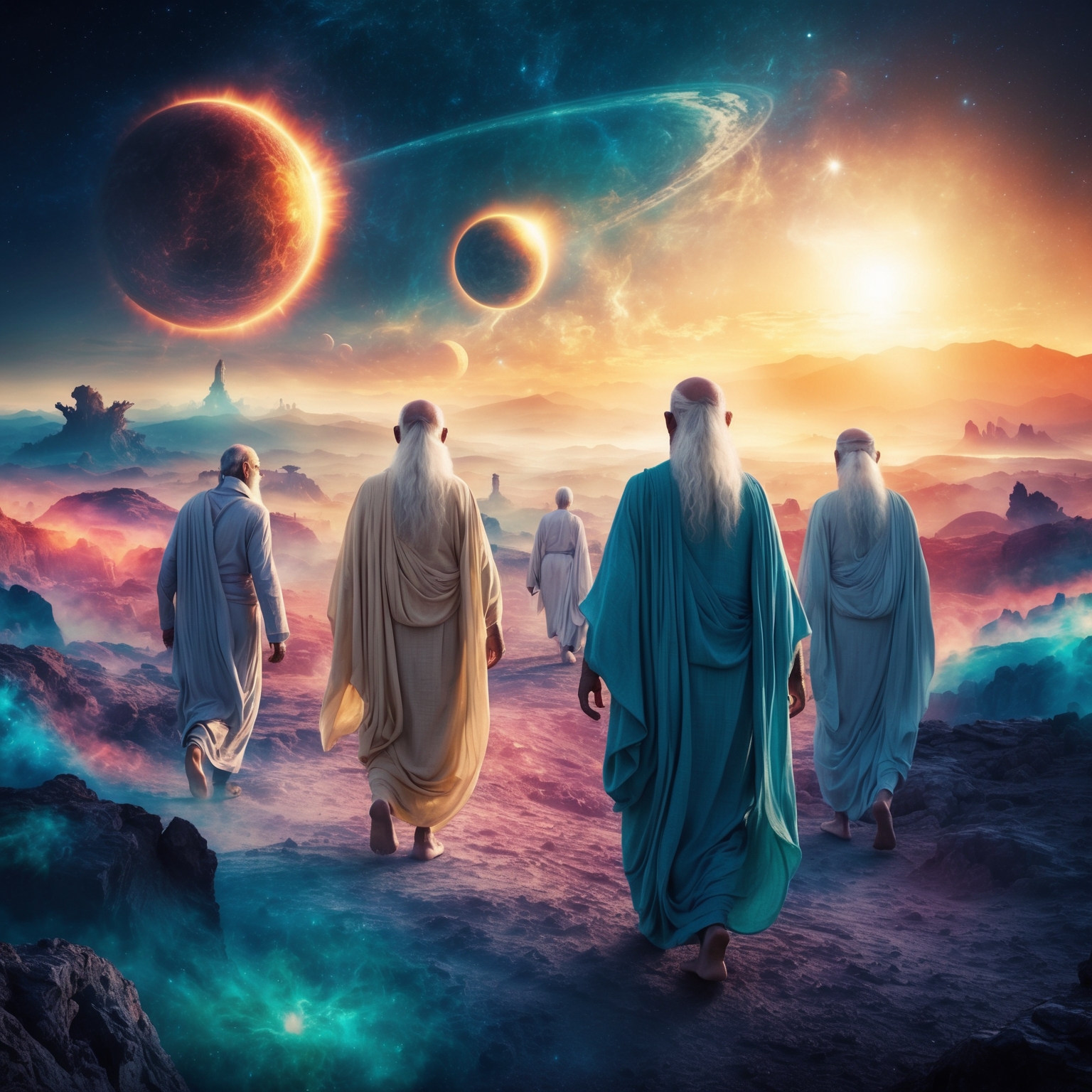 Exploring the Lyrical Themes and Messages: At its core, ‘Kashmir’ by Led Zeppelin embarks on a mystical exploration that transcends the ordinary. The lyrics, penned by Robert Plant, resonate with themes of exploration, longing, and enlightenment. As he poetically describes a ‘traveler of both time and space,’ Plant invites listeners into a realm where reality and fantasy merge. The idea of traveling to sit with ‘elders of a gentle race’ evokes a sense of spiritual pilgrimage, reaching into the depths of human and cultural history. These themes reflect not only a personal journey but also a broader narrative of human quest for wisdom and understanding.
Exploring the Lyrical Themes and Messages: At its core, ‘Kashmir’ by Led Zeppelin embarks on a mystical exploration that transcends the ordinary. The lyrics, penned by Robert Plant, resonate with themes of exploration, longing, and enlightenment. As he poetically describes a ‘traveler of both time and space,’ Plant invites listeners into a realm where reality and fantasy merge. The idea of traveling to sit with ‘elders of a gentle race’ evokes a sense of spiritual pilgrimage, reaching into the depths of human and cultural history. These themes reflect not only a personal journey but also a broader narrative of human quest for wisdom and understanding.
The Narrative and Storytelling Style: Written from a first-person perspective, ‘Kashmir’ draws listeners into an introspective journey. The narrative style is both abstract and vivid, inviting audience members to interpret the story through the lens of their own experiences. The striking imagery and the enigmatic description of places and people—who have waited for ‘days when all will be revealed’—convey a sense of timelessness that enhances the overall impact of the song. The storytelling transcends straightforward narrative, allowing listeners to immerse themselves in the evocative journey that the lyrics paint.
Use of Literary Devices: The song is laden with metaphors, similes, and rich imagery. The opening line, invoking the sun and stars, sets a majestic tone, creating a sense of cosmic wonder. Words like ‘lilting grace’ and ‘sounds caress my ear’ employ sensory language that envelops listeners in a dreamlike experience. Such literary devices elevate the lyrics, amplifying their emotional and philosophical resonances. This poetic craftsmanship invites varied interpretations, each adding layers to the song’s profundity.
Did you know Kashmir wasn’t a single, yet it’s a rock legend? 🎸✨ Jimmy Page’s guitar magic & mystical vibes make it truly timeless! #LedZeppelin #RockLegends #MusicTrivia https://bit.ly/3YwaFqJ
Click to Tweet

